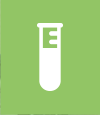Monitoring Blood Sugar
It's all about you
The blood sugar testing that you do yourself is also called self-monitoring. It measures your blood sugar level at the time of the test, for example: when you wake up or after meals. These are called your fasting plasma glucose (FPG) and post-meal plasma glucose (PPG). It’s important to keep a record of the date, time, and results of your tests and share them with your healthcare provider. Now think about getting the big picture. As you record your blood sugar levels, also include what you ate, any physical activity, and medication, if that’s part of your overall diabetes management plan. All of these things may also affect your numbers.

THE AMERICAN DIABETES ASSOCIATION RECOMMENDS:
Fasting Blood Sugar
(when you first wake up)

Plasma glucose
80-130 mg/dL
After Meal Blood Sugar
(1-2 hours AFTER starting a meal)

Plasma glucose
<180 mg/dL
The numbers listed here are general guides for most adults. Since you and your healthcare team will work together to set your target, be sure to check with them for what your blood sugar level goal should be if you don’t know it.
Self-monitoring. Help yourself
Self-monitoring is a smart way for you to take part in your treatment. Learn about how, when, and why to do it.

How:
Self-testing can be done with a blood sugar monitor that reads your blood sugar level from a drop of blood placed on a strip inserted into a monitor. Your healthcare provider can help you select a monitor and provide instruction on how to use it.

When:
Testing your blood sugar depends on your overall diabetes management plan. Work with your healthcare provider to decide when to self-test. If you eat a food you’re not used to eating and are curious about what it does to your blood sugar, test yourself approximately two hours after you eat. You may also want to check your blood sugar level before and after any physical activity.

Why:
Keeping track of your blood sugar tells you how much sugar is in your blood at any moment. When you also track what you ate, how much you exercised, and how much medication you took (if that’s part of your treatment plan), you can understand how all these things affect your levels. Use your TeamingUp Blood Sugar Tracker and bring it with you when you meet with your healthcare provider. Your team and you will be able to see what causes your numbers to go up or down, and then make any needed changes.
Watch as we show you how to test your blood sugar.
Game Plan Action Item: Commit, track, and share
- Consider making a "contract" with yourself to track your blood sugar, as directed, for 30 days
- Download the TeamingUp Blood Sugar Tracker
- Use it every day and bring it to your next healthcare provider appointment
Recommended

News You Can Use About Diabetes
You’re so much more than your diabetes. Let us help you take on everything from travel to holiday stress.

Beyond Blood Sugar Testing
There is more to keeping track of your health than just blood sugar testing. Get the facts about tests your healthcare provider may recommend.

Making A Medication Routine Part Of Your Plan
Tips for starting and staying on track.
SHOW ME >>


